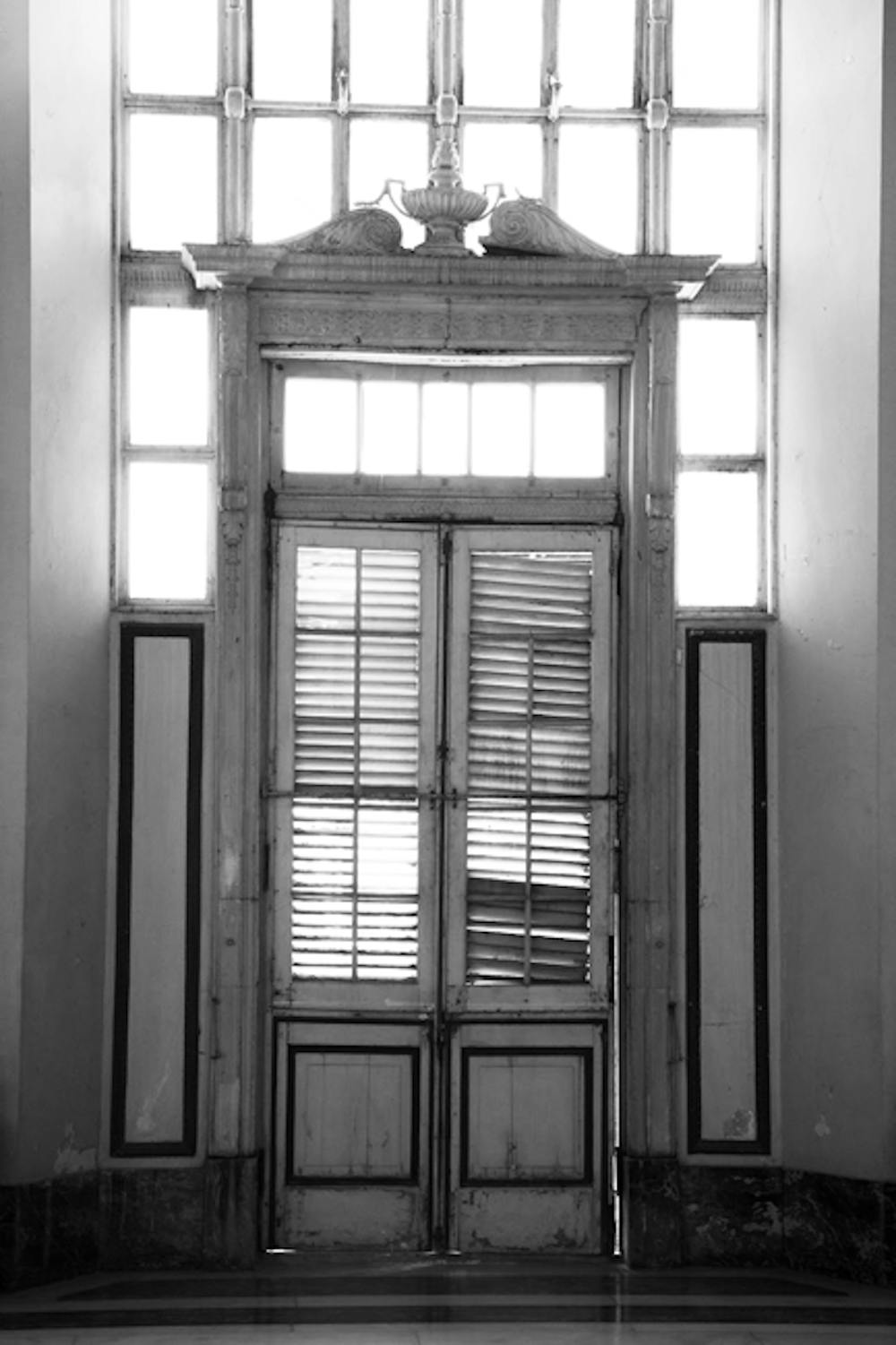Name and Year: Sarah Meyohas, 2013 Hometown: New York City Major: International Studies, Finance Medium of Choice: Photography Website: www.sarahmeyohas.com, www.sarahmeyohas.blogspot.com
Street: How did you begin making art? Sarah Meyohas: I practically grew up in the Metropolitan and Whitney Museums in New York City, but it wasn’t until sophomore year at Penn that I started making art. Perhaps because art had always had a place in my life, my interest snowballed. Within a year, I was at a residency at the School of Visual Arts in New York.
Street: You’re a photographer, but your images seem to go through a few stages after the camera clicks. How would you describe your process, and what kind of techniques do you use when you create a final product? SM: I use appropriation, deletion and collage. None of these processes are particularly technical or fancy. Rather, they reflect conceptual choices.
Street: A lot of your work is corporal or sexual. When did you begin focusing on these themes? Why are they important to you? SM: I certainly didn’t choose to focus on these themes. They emerged despite my distaste for gratuitous provocation in the art world. I focus on sexuality partly because I do not understand it very well. It is irrational, intriguing and ubiquitous. These are all characteristics that make for great exploration.
Street: Is any of your work autobiographical? SM: I’m cute. My photos aren’t. My work exposes my inner thoughts rather than any lived experience. As such, my work is somewhat voyeuristic. I appropriate images: collaging, deleting or obscuring parts. I engage with material that is not part of my life as a Penn student, but still intrigues me.
[photospace]
Street: What has your favorite project been and why? SM: The projection project was my first series. Using a projector, I placed an image of a celebrity on the sitter’s face and took a picture in a dark room. By bringing both faces, that of the ordinary individual and the deified celebrity together, the viewer can start to assess the differences and similarities between the two. This series explores the subject–object relationship of the celebrity and the individual — more specifically, their auto–production.
This was my favorite project because it marked my first involvement with themes of sexuality. It also allowed me to interact with members of the transgender community that I would have never engaged with otherwise. Most importantly, I experienced the magic of seeing what I had considered an infeasible, silly idea of using an overhead projector into a finished project.
Street: You went abroad to Cuba last fall and documented much of your trip. Do you think photography allowed you to see and feel the country? SM: Cuba’s history is remarkably photographic. It is impossible to ignore the impact of such iconic images such as Alberto Korda’s portrait of Che Guevara. In Cuba, I was able to go to the National Archive every week. I looked through all of the political photographs in the Archive and found photographs of Cuban prisoners in 1927 the day before their executions. The photographs were hauntingly beautiful. The prisoners were staring directly at me, traversing eighty–five years with their piercing gazes. A photograph has no future. Neither did these men. I held the flatness of death in my hands.
Street: The Cuba photographs immediately seem documentary. Do you think of all of your work that way? SM: It was very difficult for me to take documentary photographs in Cuba. I’m not interested in pornomiseria. I’m not interested in the visual tropes of crumbling houses and 1950s cars. In the few pictures I took, I was hoping to expose some reality in a place that has become a dream to many.
Street: As a Huntsman student, how do you find time in your schedule to be creative? Have you taken any Fine Arts classes at Penn? SM: I have many academic requirements. I added a personal requirement: one photography class per semester.
Street: Do you hope to pursue art professionally? What are your general plans for the future? SM: Given that my other main interest is finance, I always expected art to be a vocation rather than an occupation. This semester, I changed my mind. Whether it was Cuba’s communism or just growing into myself, I am now planning to become an artist. Lots of kids study liberal arts and then go into business. I’m just doing it the other way around.
-----
If you want to see her work along with that of other students, check out Corpus Corporum, a photography exhibition exploring the human body.
Opening Reception: Thursday, April 19th 4:30-6:30 PM Philomathean Society of the University of Pennsylvania College Hall, 4th Floor 34th and Locust Walk Philadelphia, PA 19104
April 19th-May 11th, 2012 Gallery Hours: Mondays, Wednesdays and Fridays: 11AM-1PM, 5PM-9PM Tuesdays and Thursdays: 7-9PM Saturdays: 12-5PM







